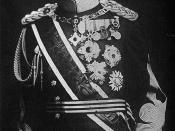The concept of Japaneseness describes the values which characterize the national Japanese identity and are perpetuated through the media and the government. These values include collectivity, harmony, homogeneity, conformity, insularity, national pride, and belief in a vertically structured society dominated by men. Many Japanese nationalists believe that these Japanese values are under threat from the outside influences that have infiltrated Japan since the Meiji Restoration, particularly following World War II. However, it is interesting to note that the concept of Japaneseness is continually reinventing itself and changing with the times (McVeigh, 2004).
It may be argued that several aspects of Japaneseness have been preserved despite huge international influences on Japan's social, political and education systems, particularly during the US Occupation. Japanese values which appear to have been retained until today include the importance of group identification and belonging, harmony and conformity within groups, and most importantly, the inward-looking nature of such groups.
These facets of Japaneseness are demonstrated by the structure of Japan's media system and the continued use of kisha clubs.
The strict barriers of entry into kisha clubs and the exclusion of many foreign and freelance journalists from such clubs severely limits the objectivity and scope of opinions reported, and provides a reflection of the insularity of Japan's society, especially towards gaijin or outsiders (Freeman, 2000). Within each kisha club however, there are strong feelings of cohesiveness which I think provide a sense of identity for the members, and an overriding desire for harmony. Journalists in kisha clubs prefer not to compete for the same stories; rather they co-operate with each other and often collect information as a group (Freeman, 2000). These journalists also spend a large amount of time with the individuals they report on, eventually forming very close and intimate relationships with their news sources, which...



Japanese essay
great essay. very informative and good sources
0 out of 0 people found this comment useful.